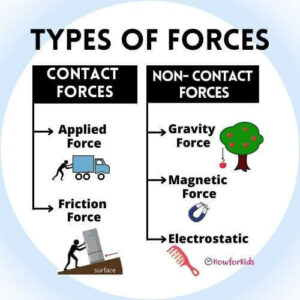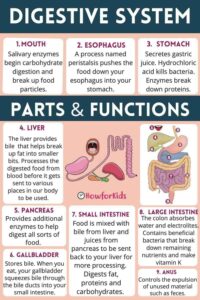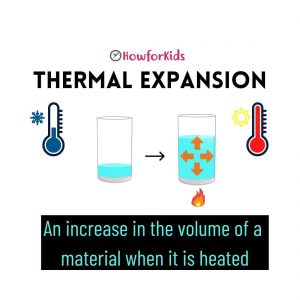Everywhere in the universe, there is energy. Energy is all around us. Without energy, life would be impossible. Energy is essential for life. The energy, you can’t see it. But we can observe the effects it produces, the transformations it undergoes and how it is obtained. To perform activities that require work, you need energy. In this article we explain what energy is for elementary school children, where it is located and how to take care of it.
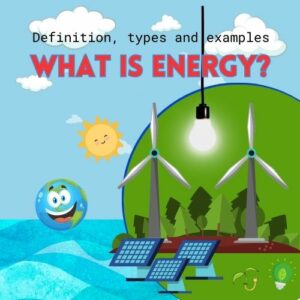
What is Energy?
Table of Contents
Energy comes in different forms. When children run without stopping, without slowing down, we say that they have a lot of energy. When a battery lasts a long time, we say that it stores a lot of energy. Athletes drink energy drinks, when they need more energy. The animal food chain, (of which we are part), is a food chain of energy, which is transferred. Food stores energy. Energy is related to movement.
A Simple Guide to Understanding Energy
How many devices are there in your life, which consume energy?
Anyway…Energy is like a currency that you can spend when you need to do a job. When our body has enough energy, we can apply more forces over longer distances and do more work than when we have less energy.

Energy: Definition for Kids
Energy is the force capable of generating an action or work.
The word energy comes from the Greek enérgeia, which means “activity”.
It is a force that can be measured, that intervenes in all forms of action or reaction.
Read also: Types of Forces
The History of Energy
Where did energy come from? How did we learn how to use energy?
It is not easy to determine the moment in which the scientific idea of energy appears. Since ancient times, the phenomena of the atmosphere that produce electricity such as lightning and lightning have been observed. In addition, scientists studied other phenomena such as: heat, movement, electricity, light. Until they realized, that there were various ways in which energy manifested.
As energy cannot be seen, it is observed through the effect it produces on bodies. For example, when the wind blows, although we do not see it, we appreciate that objects move, the leaves of the trees fly. We are going to explain how energy is transformed and transferred.
Sources of Energy: What are the Sources of Energy?
It is called a source of energy, to the existing resources (whether natural or artificial), from which humanity can obtain usable energy in its activities. The origin of almost all energy sources is the Sun.
Origin of Energy: Where does the Energy come from?
Human beings need energy to live. Energy is needed for the development of industry, we must heat our homes, in our body there is a constant flow of energy.
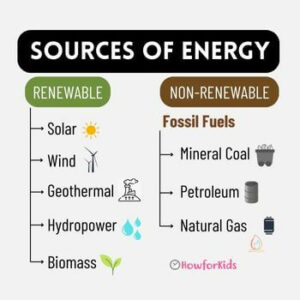
Types of Energy
Energy sources are categorized into two large groups: renewable and non-renewable, depending on whether they are “limited” or “limited” resources.
Renewable Energy
It comes from natural sources or processes that are constantly replenished. Examples: solar (from the sun), wind, water, geothermal (from the earth), and biomass (from organic materials).

Non-renewable Energy
Energy sources that can disappear with use because they are not replaced. They were formed when prehistoric plants and animals were gradually buried under layers of rock in the ground. Different types of fuel were formed according to the conditions. Such as the type of organic material (plant or animal), how long it was buried, at what temperature and under what pressure. The types of non-renewable energy are natural gas, coal and oil.
Burning Fossil Fuels
Currently, we use non-renewable energy sources, such as fossil fuels, as our main energy resources.
Non-renewable Energy Sources Examples
Within the so-called non-renewable sources are fossil fuels such as: mineral coal, oil and natural gas.
Fossil Fuels: Types, Formation and Uses
Fossil fuels are repositories of organisms that were once alive. They were transformed in the earth’s subsoil, giving rise to organic matter that was formed over centuries. These substances have originated from the remains of living beings (plants and animals). They are non-renewable energy resources. They require millions of years to form naturally. Due to their high calorific power, they are very useful energy sources to generate thermal energy.
There are three types of fossil fuels that can be used for energy supply: mineral coal, oil and natural gas.
Fossil Fuels: Meaning, Types, and Uses
Mineral Coal
Mineral coal is a black sedimentary rock very rich in carbon. Most of the coal was formed during the Carboniferous period (359 to 299 million years ago) by the deposition and fall to the ground of plant material. These layers were compacted, heated over time and the deposits were transformed into coal. It is the most abundant of the fossil fuels. The use of coal was of great importance during the industrial revolution, because it was the main source of energy for industry. It is often used in homes for heating and cooking food. Although at present its use has decreased considerably, among other reasons, to reduce the greenhouse effect.
Petroleum
Why is Oil a Fossil Fuel?
Because it is the product of the decomposition of the remains of microorganisms, which lived millions of years ago in seas, lakes and river mouths. It is a liquid substance, less dense than water, dark in color, oily in appearance, and has a strong odor.
Oil has multiple applications. Fuels are obtained to run machinery and transport or vehicle engines (naphtha, diesel, kerosene). Fuels generate heat and movement. It is also used in fertilizers, plastics, explosives, medicines, dyes, synthetic fibers, among others. It is used in thermal power plants to produce electricity.
How do we use fossil fuel energy: Do they hurt Earth?
Natural Gas
It has an origin similar to that of oil. It is used in kitchens and to heat homes. Also as fuel (public transport) It is mainly composed of methane. It is less polluting than other fossil fuels.
Given the great demand for energy in today’s society, and that fossil fuels are running out, new alternatives are being found, such as renewable energy sources.
What is Renewable Energy for Kids: Examples
On Planet Earth, almost all the energy we use comes from the Sun. Life on Earth depends on the energy from the Sun, which is also responsible for the climate and weather in the different regions of the planet. This energy is used in different ways, it gives us light and heat. The Sun recharges energy stores.
Renewable energy sources are those that can be regenerated naturally or artificially. They are replaced over time and do not go away easily. Some of these renewable sources are subject to cycles that are more or less constant in nature. The sun’s rays generate temperature differences in the atmosphere that will cause winds, waves and rain.
Renewable energy sources are:
• Hydropower (dams)
• Wind energy (wind)
• Solar Energy (Sun)
• Tidal energy (seawater energy)
What is Hydropower Energy

Hydropower energy is the one obtained from the water of the rivers. It is a renewable energy source that is obtained by taking advantage of a natural or artificial waterfall. It is produced by the water retained in dams or reservoirs at high altitude that has gravitational potential energy. When dropped to a lower level, this energy is converted into kinetic energy and then into electrical energy. Installations that transform water energy into electrical energy are called hydroelectric power plants.
What is Wind Power for Children
Wind power is a renewable energy source produced by the force of the wind to generate electricity.

Wind Turbines and Wind Farms
Throughout history, it has been used by civilizations. For example, in windmills to extract water or sails to move boats. Currently, the main means of obtaining it are wind turbines. They have replaced the “windmills”, they are of variable size that transform the kinetic energy of the wind into mechanical energy with their blades. Wind energy can be obtained by installing wind turbines, on firm ground as well as on the ocean floor.
What is Solar Energy for Kids
Solar energy is that which reaches the Earth from the Sun. It is a type of clean and renewable energy since its source, the Sun, is an unlimited resource. To transform solar energy into electrical energy, the electromagnetic radiation that comes from the Sun is collected (thermal collectors, photovoltaic cells). Photovoltaic panels are devices that allow the transformation of solar energy into electrical energy. Let’s not forget that the Sun’s energy is involved in photosynthesis. In this process, light energy is transformed into chemical energy.

Solar Energy: Advantages and Disadvantages
Solar energy has many advantages. Currently, it is increasingly necessary to replace the use of non-renewable fossil fuels for power generation. Solar energy is renewable and therefore not polluting.
Among the disadvantages is an energy source that depends on climatic factors and the number of hours of the Sun per year.
What is Geothermal Energy
How does Geothermal Energy Work?
Geothermal energy is that which comes from the heat stored inside the Earth. It is obtained by drilling the earth’s surface. An example of a geothermal energy source is hot springs that are found at shallow depths and that emanate steam. When used correctly, geothermal energy is a renewable, clean and unlimited energy. It is used for heating homes, air conditioning pools, acclimatizing hatcheries, dehydrating vegetables and generating electricity.
Seawater Energy Definition
It is the one obtained by the movement of sea water. Due to the movements of the masses of sea water (the rises, the falls and the waves that originate on the surface of the sea due to the action of the wind).
There are other types of energy:
What is Chemical Energy for Kids?
Battery-powered watches are also powered by chemical energy. Batteries are devices that convert chemical energy into electrical energy.
Chemical Energy in Food
Food contains chemical energy that is released when combined with oxygen. It is metabolized inside the body by the process of digestion.
What is Thermal Energy for Kids?
Thermal Energy for Kids: Definition and Examples
When energy is transformed, some of it is dissipated as heat. If we stand in the sun, we feel heat. If we get close to a fire or a light bulb we perceive heat. All bodies have heat. Heat is a form of energy called thermal energy that is transmitted from one body to another. The more thermal energy an object has, the hotter it will be. When a body absorbs heat, its temperature increases. On the other hand, when a body releases heat, its temperature decreases and it cools.
Thermal Expansion and Thermal Contraction
Heat causes effects on matter. Many objects increase in volume when heated. This phenomenon is called thermal expansion.
In contrast, when heat is removed from an object, its volume is reduced, this is called thermal contraction.
This is explained because as the temperature rises, the particles that make up that object become more agitated. They acquire energy, their routes are longer so they take up more space. If the temperature drops, they shake less and take up less space.
Heat and temperature are not the same. Temperature is used to measure the amount of thermal energy that objects have.
What is Electric Power for Children
When a computer, television, refrigerator or other household appliance is turned on, electrical energy or what we commonly call electricity circulates through the cables. Everything works thanks to electricity. It is one of the most used forms of energy in homes.
How to explain these Electrical Phenomena?
All matter is made up of atoms. Atoms are made up of a nucleus (contains neutrons and protons) that are surrounded by electrons. These particles that make up the atom contain electrical charges. Protons have a positive charge and electrons have a negative charge. And neutrons have no charge (zero charge).
The passage of charges from one body to another is called electric current. Electrical energy is caused by the movement of electrical charges (electrons) within conductive materials.
When we turn the knob of a lamp, an electrical circuit is closed and the movement of electrons is generated through the metallic cables. In order for a light bulb to light up, in addition to metal, a generator or a battery is necessary to drive the movement of electrons in a given direction.
Examples of Good Electrical Conductors and Insulators
Electrons do not move with the same ease in all materials. There are good conductors such as metals (iron, copper, silver, gold, aluminum). They are used inside electricity cables.
In other materials (such as wood, rubber, plastic, paper), electrons cannot move. They are bound to their atoms. They are bad conductors, or we say, they are good insulators.
Fun Facts about Energy
The electrical charge of an atom is zero. The fundamental rule is: “Charges of the same sign repel each other, and charges of different signs attract each other”. We explain, atoms generally have the same number of protons as electrons. Therefore, they contain the same number of positive charges as negative ones. Atoms are “electrically” neutral.
How Electricity Flows
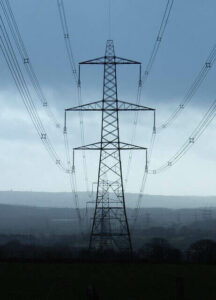
How Electricity reaches our Homes
Electric power is generated in power plants, which are usually located in remote areas. From those places, it is distributed and undergoes some transformations so that it can be used in our homes. It is sent, through high tension lines, in metal towers, to substations near the towns. There, they connect it to medium voltage lines. Already near the homes, through transformers, they reduce the voltage, to 220 volts for family houses.
Primary Energies and Secondary Energies
Primary energies are those obtained directly from nature: solar, hydraulic, wind, geothermal, biomass, oil, natural gas or coal.
Secondary energies come from the transformation of primary energy destined for direct consumption or other uses: gasoline, electricity, diesel. Electricity, for example, is a secondary energy source. Because a primary energy source (natural gas, coal, wind energy) has been previously transformed. During the process of transforming, energy losses occur.
What is Biomass?
Biomass energy is that which is obtained from organic matter of plant or animal origin by natural processes.
Plants transform the Sun’s energy into chemical energy through photosynthesis. A part of this energy is stored in the form of organic matter.
Fossil fuels and derived organic materials (such as plastics and synthetic products) are not included since, although they have had a biological origin, their synthesis was in ancient times. Biomass, on the other hand, is a renewable energy of solar origin through the photosynthesis of plants.
Energy and Biomass: Advantages and Disadvantages
Advantages
• This energy generates low waste, biodegradable, is clean.
• It is produced continuously by human activity.
Disadvantages
• Requires large areas and quantities of plants. Attempts are being made to genetically engineer an appropriate plant.
• Releases gases (carbon dioxide) that increase the greenhouse effect.
• The performance is lower than that of fossil fuels.
Energy Transformation Processes
According to the principle of conservation of energy, “Energy is neither created nor lost, it is only transformed.”
Each type of energy can be transformed into others. Through the transformation of energy, we obtain what is necessary to live and to make machines work. For example, it allows us to use a renewable energy source such as wind power to generate electricity, which will be transformed into heat through an electric stove.
This explains that electrical energy can be transformed into light energy (when we turn on a lamp), mechanical, thermal (heat), sound energy (when we turn on a music device).
What the human being does is locate the available energy and see how to transform it to use it for his benefit.
Solar radiation allows plants and trees to develop. Vegetables will be food for herbivorous animals.
Examples of Energy Transformation
The transformation of energy allows us to obtain from food the essential nutrients to carry out daily activities. The process of digestion produces chemical energy from food.
Subsequently, it can be transformed into other types of energy:
Mechanical, when we move body or heat energy, if what we require is to maintain our body temperature.
Electrical, it is transformed into light energy and heat when used in a light bulb.
Importance of energy saving
When we save energy in our homes, we contribute to reducing the gases that cause the greenhouse effect and the consequences of climate change.
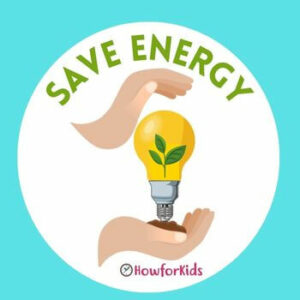
Ways to save energy and money
• Use low consumption lamps/light bulbs.
• Turn off the lights in the rooms that you are not using.
• Use natural light as much as you can.
• Adjust the thermostat to a maximum of 20ºC in heating and air conditioning equipment.
• Use the washing machine with a full load: you will save water and electricity.
• Defrost the freezer: The frost creates an insulation that can generate an extra 20% of electricity consumption.
• Turn off the computer if you are not using it: A device on standby can represent up to 70% of your daily consumption.
• Unplug all electrical appliances that you are not using.
• If possible, use alternative energies for electricity production, such as photovoltaic cells to use solar energy or wind generators.
• Do not use irons and coffee machines excessively.
• Substitutes electric stoves for gas stoves.
• Periodically clean light bulbs and lamps, as dust blocks light.
• Paint the ceilings and walls of your rooms with light colors, to have better lighting.
• Replace old appliances with new ones, as they consume less energy.
• Change dirty filters and clean deposits of dust and debris from the vacuum cleaner, this makes it work more efficiently.
• Close the refrigerator door well, change the damaged gaskets, so that you don’t use more energy. When you remove or store food, make sure it is not hot.
